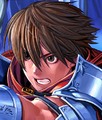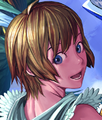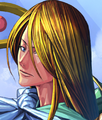The official discord link if you wish to join the discord: https://discord.gg/j5RKwCvAFu
Support the wiki on our official Ko-Fi page or Patreon page!
Glory of Heracles: Difference between revisions
| Line 65: | Line 65: | ||
File:LeucosBanner.png|Leucos|link=Leucos | File:LeucosBanner.png|Leucos|link=Leucos | ||
File:AxiosBanner.png|Axios|link=Axios | File:AxiosBanner.png|Axios|link=Axios | ||
File:ArnosBanner.png|Arnos|link=Arnos | |||
</gallery> | </gallery> | ||
{{Discussions}} | {{Discussions}} | ||
Revision as of 22:45, 22 September 2021

Background
Glory of Heracles is a series of video games developed by Data East, Paon Corporation, and Nintendo. This is an extremely long-running Nintendo franchise, although it is fairly unpopular despite its longevity. The Glory of Heracles series consists entirely of traditional turn-based role-playing games, with the first fame of the series, "Legend of the Fighting Demon's Lair: Glory of Heracles" being released in 1987 for the Nintendo Entertainment System.
The Glory of Heracles series is heavily based off of Greek Mythology, with nearly every single character in the series being based on some way off of Greek myths. The first game in the series features the Greek Demigod hero, Heracles, as the main character, although he only features as a side-character in future titles. The main protagonist and antagonist between games is always different.
More often than not, the villains of the series are the Titans; eld gods who used to rule the universe in a Golden Age. Upset by the new gods rule, the Titans revolt and attack. Demigods and other heroes are chosen to deal with the threats, which makes up the bulk of the series' storylines.
Terms
- Firmament of the Stars: Also called the skies, or the universe, the Firmament is the blanket that lies above the Earth, and contains all of the cosmos. Created by Uranus, the Firmament is the layer of Greek Mythology that is directly below the heavens. Unlike most cosmology that is split into things like solar systems and galaxies, the Firmament is a generalization of the entire universe.
- Olympian Gods/Goddesses: A group of extremely powerful and revered gods who were worshipped throughout history in the Greek Mythos. Also known as the Olympians, these gods and goddesses were led by Zeus, king of the gods and god of the sky. Although morally they seemed to be good, the gods were sometimes tricksters, and would grant very strange punishments upon people; such as cursing random people with immortality, and cursing a prophet to never be believed.
- Demigods: The children of the gods, conceived using a god and a mortal. Due to the nature of their birth, Demigods were mortals who rose above their peers with exceptional abilities. The most notable of the Demigods was Heracles, son of Zeus and a mortal mother. Heracles, due to his several adventures, was seen as legendary among humans.
- Titans: A titan refers to any of the direct children of Uranus (Heaven) and Gaea (Earth). Titans were unbelievably powerful beings who dwarfed even the gods, so divine and powerful that the time in which they lived was referred to as the Golden Age. Notable titans in Glory of Heracles would be Typhon and Oceanus, who stood in opposition to each other in a battle for the Earth.
- Eld Gods: A sub-section of the titans, which are also called the elder gods. Including beings such as Oceanus and Prometheus, these elder gods grew enraged with the rise of the newer gods such as Zeus, and engaged in war with them. The eld gods built a super-weapon titan known as Typhon to fight for them, but they lost nonetheless. As a result, Typhon was sealed beneath the Earth, and most of the elder gods were punished.
- Taphus: The Taphoi (plural for Taphus) were created by Daedalus following the defeat of the eld gods, planning for their revenge. When mortals used magic, they exerted Dark Ether, which was then absorbed by the Taphoi. When enough Dark Ether was gathered, the Taphoi would then revive Typhon to destroy the world.
- Crasis: An extremely intricate machine built by Daedalus, following the death of his son Icarus. The Crasis is a machine that had the ability to split the soul of anyone who stood atop it, and infuse said soul within another host; leading to the Heracles incident. Alternatively, if altered, the Crasis can reverse its effects and bring souls back to their original body. Incidents with the Crasis have left some mortals soulless husks.
- Ether: All living things are comprised of a substance known as Ether, which can also be considered lifeforce. Ether is comprised of five elemental attributes; fire, earth, wind, water, and darkness. Because of this, those who know how to channel ether can preform magical elemental attacks. When a living being is killed, their physical body reverts to Ether, which is then absorbed by the person who killed them, and increases their magical power.
Calculations
Glory of Heracles Feats & Calcs
- Typhon threatens the Earth: Planet level (5-B)
- Axios, Arnos, & Agon: Low Planet level (Low 5-B)
- Quarter of Heracles's Soul: Low Planet level (Low 5-B)
- The Celestial Dagger: Multi-Solar System level (4-A)
- Uranus's Sword: Universe level (3-A)
Power of the Verse
Glory of Heracles is a fairly powerful verse, able to reach incredibly high levels depending on those who are able to scale to gods and titans. Most characters in the series, who were blessed with immortality from the gods, are able to scale to Small Town level and Massively Hypersonic, with those who scale to the gods/Titans reaching up to Planet level and FTL. Some weapons in the verse, when wielded, can buff specific characters up to Multi-Solar System level, and even Universe level, though nobody truly scales. The verse has a some good hax, including Immortality, Life Manipulation, Soul Manipulation, and Fate Manipulation.
Canon
The canon of Glory of Heracles is incredibly simple to figure out, since every single installment is considered canon, and a part of the same timeline of events. The only problem arises with organizing the timeline, as most of the games are not directly tied to one another (aside from The Snap Story, which is a direct continuation to Legend of the Fighting Demon's Lair). The simplest solution would be to place them in order of the game's numbers (II, III, IV).
Timeline
- Legend of the Fighting Demon's Lair: Glory of Heracles (NES)
- Glory of Heracles: The Snap-Story (Game Boy)
- Glory of Heracles II: Titan's Downfall (NES)
- Glory of Heracles III: Silence of the Gods (SNES)
- Glory of Heracles IV: Gift from the Gods (Super Famicom)
- Glory of Heracles: Proof of the Soul (Nintendo DS)
Knowledgeable Members
Characters
I: Legend of the Fighting Demon's Lair
The Snap-Story
II: Titan's Downfall
III: Silence of the Gods
IV: Gift from the Gods
V: Proof of the Soul
-
Icarus
-
Leucos
-
Axios
-
Arnos
Discussions (Link For Mobile Users):
| Discussion threads involving Glory of Heracles |




